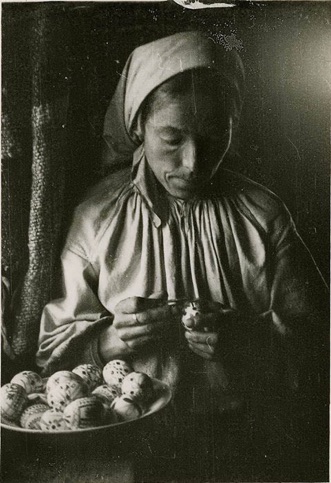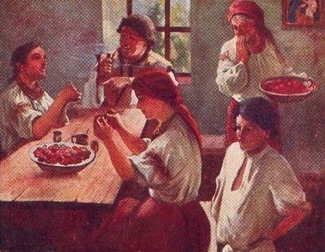Traditions:
Writing Pysanky
Traditions:
Writing Pysanky

Who wrote pysanky?
Pysanky were traditionally written by the women of the family; men and children1 would have been excluded from the process. The writing of pysanky was a traditional women’s activity.

Pysankarka from Kosiv, 1920s (Ivan Honchar)
The pysanky were written at night, when the day’s work had been done and the children were asleep. The women in the family gathered together, around the family stove, said the appropriate prayers, and went to work. It was an activity performed in secret––the patterns and color combinations were handed down from mother to daughter, and guarded from prying eyes. And, except for the simplest two-color eggs, it would have been done over several nights, as dyeing with natural dyes was not a quick process, and sometimes entailed soaking the eggs for hours at a time.
In more recent times, as pysanky have become considered objects of folk art rather than powerful talismans, men have begun to write pysanky. Many Ukrainian ethnographers have re-created traditional pysanky (Fusyn, Solomchenko, Elyjiw), and some of the great modern masters of the art are male (Horodetsky, Pushkaryov, Kirashchuk).
__________
1.Most Easter cards and other illustrations I have seen of “traditional” pysankarstvo (e.g. below) get this simple fact wrong. While older girls might have been included in pysanka making, younger children, like those in the painting at the top of this page, were not. It is a common misconception among non-ethnographers, particularly those in the diaspora, that pysankarstvo in the past was the same as it is now: a family activity involving parents and children alike. The truth was quite the contrary: a practice this important was left to adults, and it was part of the traditional women’s realm.

Back to Traditions home page
Back to MAIN Pysanka home page.
Back to Pysanka Index.
Search my site with Google

Hutsul women writing pysanky (Youry Bilak)